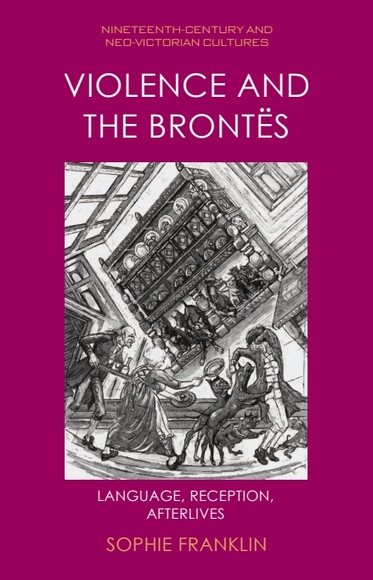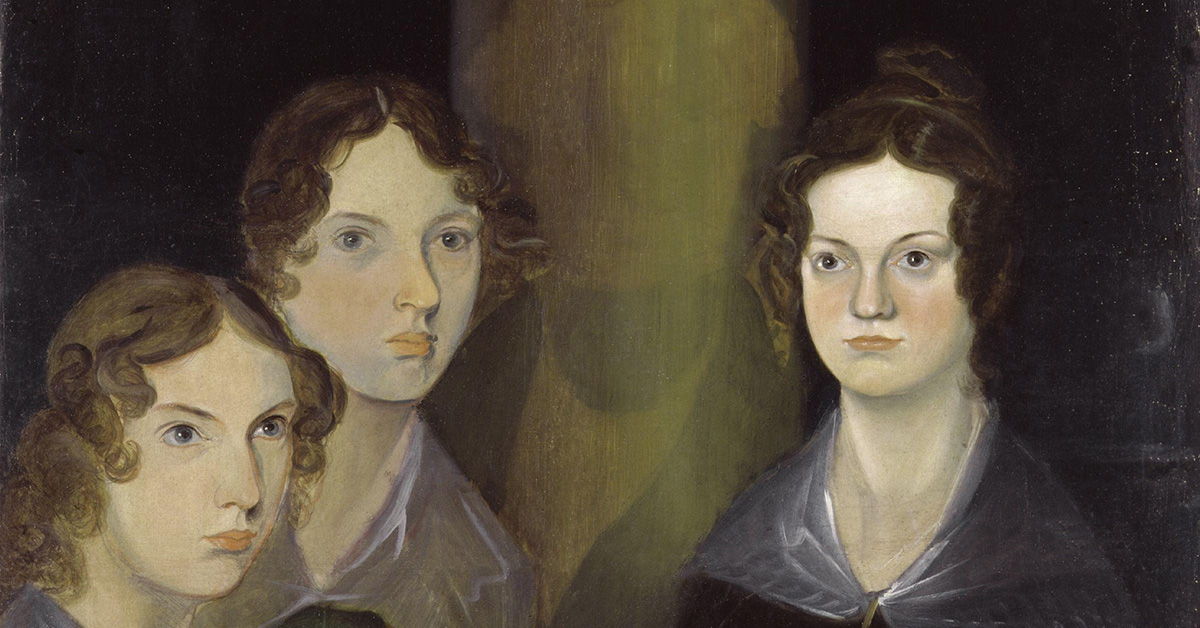
by Sophie Franklin

Violence and the Brontës: Language, Reception, Afterlives explores the role of violence in relation to Anne, Charlotte and Emily Brontë’s literary productions, receptions and cultural legacies.
Since its first announcement in 2024, Emerald Fennell’s adaptation of Emily Brontë’s classic novel, Wuthering Heights (1847), has courted a lot of controversy. From the casting of a white Australian actor as Heathcliff to the use of a white wedding dress as a costume for Catherine, Fennell’s film has rarely been out of the news. After its first test screening in August 2025, the film made headlines again for opening with a public execution. Those familiar with Emily Brontë’s novel will know that the book features no such public hanging. Fennell’s adaptation is not the first reimagining of Anne, Charlotte, and Emily Brontë’s literary works (and lives) to insert or enhance scenes of violence – and it won’t be the last. Here are five adaptations and reworkings of the Brontës’ books and biographies that put violence front and centre in the Brontës’ literary and cultural afterlives.
1. Andrea Arnold’s Wuthering Heights (2011)
Often viewed as one of the most “faithful” adaptations of Emily Brontë’s novel, Arnold’s film is (so far) the only one to cast a black actor as Heathcliff, visualising the book’s implications with issues of race, slavery, and colonialism. Arnold simultaneously captures the novel’s intensity through an emphasis on physicality, rather than on words – dogs are hanged on branches, Heathcliff self-harms and explicitly commits necrophilia, and Catherine and Heathcliff playfight as children. The film also positions the Yorkshire moors as a character in themselves, with unsettling close-ups on the forcefulness and brutality of nature adding to the unnerving atmosphere.
2. Mike Barker’s The Tenant of Wildfell Hall (1996)
This BBC TV series is (unfortunately) one of the few adaptations of Anne Brontë’s novel, The Tenant of Wildfell Hall (1848). Anne’s second book has been hailed as a proto-feminist classic due to its representation of domestic violence and the oppression of married women in the nineteenth century. The protagonist, Helen Huntingdon, escapes an abusive marriage and takes her young son with her, living outside the law at a time when women had few legal rights over themselves or their children. Starring Tara Fitzgerald and Toby Stephens, the series makes the novel’s depiction of marital abuse even more explicit for a modern audience by including several scenes of physical abuse and the insinuation of rape.
3. Sally Cookson’s Jane Eyre (2015)
Originally performed at the Bristol Old Vic in 2015, Cookson’s dramatic reimagining of Charlotte Brontë’s Jane Eyre (1847) has since toured the UK. Many adaptations of Jane Eyre have sanitised its problematic depiction of Bertha Mason, Rochester’s Creole wife whom he keeps locked in the third storey of Thornfield Hall and who never speaks in the novel. In Cookson’s play, Bertha is given a voice through song and doesn’t leave the stage, constantly reminding the audience of her marginalisation in contrast to Jane Eyre’s own triumphant happy ending. The production does, however, explicitly show Rochester’s propensity for violence, leaving a bittersweet taste in viewers’ mouths.
4. Michael Stewart’s Ill Will: The Untold Story of Heathcliff (2018)
In this novel, published during Emily Brontë’s bicentenary, Stewart wonders what happened during Heathcliff’s three-year absence from Wuthering Heights. In answer, he imagines that Heathcliff, having left Catherine behind, goes in search of his heritage (which has intrigued and perplexed readers and critics for decades). In the process, he learns that his mother was an enslaved woman from the Gambia who was imprisoned, raped, and tortured by white British men. Heathcliff then murders these men, which Stewart depicts in extraordinarily graphic and bloody detail. Stewart’s representations of violence show how Heathcliff became the abusive anti-hero of Wuthering Heights, but they also capture some of the novel’s initial shock factor for twenty-first-century audiences.
5. Sally Wainwright’s To Walk Invisible (2016)
Wainwright’s gritty biopic follows the Brontë sisters from 1845 to the death of their brother, Branwell, in September 1848. Branwell’s struggles with addiction and mental illness are shown vividly and violently. In one scene, he hits his father, Patrick, and almost comes to blows with Emily. Wainwright’s dramatisation suggests that Branwell’s experiences influenced his sisters’ novels, providing one answer to the perennial (and often problematic) question of where the Brontës’ representations of violence came from. The film takes its title from a letter written by Charlotte Brontë, in which she asks: “What author would be without the advantage to walk invisible?”

About the author

Dr Sophie Franklin is a DOROTHY COFUND postdoctoral researcher at University College Dublin. She is an Associate Editor for Brontë Studies and her book, Violence and the Brontës: Language, Reception, Afterlives, is published with Edinburgh University Press in September 2025.





